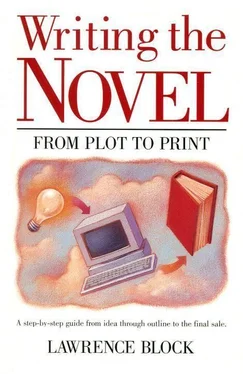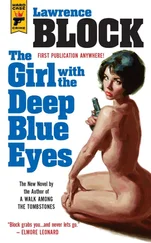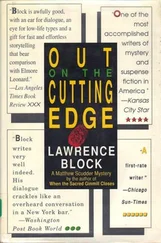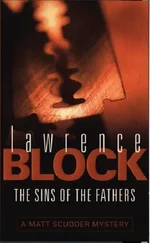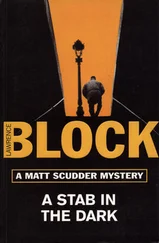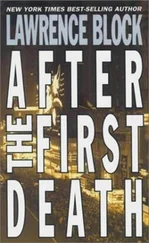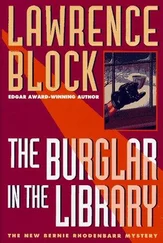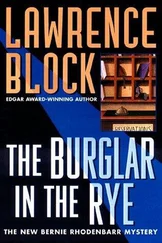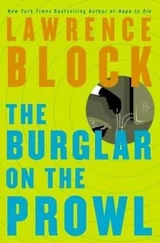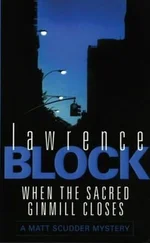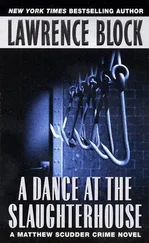This was fun, and it wasn’t all that bad an idea, but it didn’t teach me a hell of a lot about screenwriting. I came to realize somewhere along the way that I was taking the wrong approach. I wouldn’t be writing movies, after all. I would be writing screenplays. So, instead of studying the films themselves, I ought to be reading their scripts.
If it sounds like a small distinction, I suggest you give it some thought. What I wanted to write was a script, and in order to do that I had to learn what a script was, how it worked not on the screen but on the page. I had to be able to see a film as words on paper, not images on a screen, because I would be writing that script by putting words on paper.
So I read scripts, quite a few of them, and what a difference it made! In the first place, I began to understand what scripts were, how they were written, and how I could write one of my own. In the second place and at least as important, my reading of film scripts made a significant change in my perception when I looked at a film in a theater. My perspective was changed, and I’d look at the movie and mentally translate it back into the script it had come from.
This didn’t make me a screenwriter. I did write a movie script, and a treatment for another movie, and in the course of doing this I learned that I wasn’t really cut out to be a screenwriter and didn’t really want to be one, for any of a variety of perfectly sound reasons. But I still watch films with a heightened awareness of the underlying screenplay, and I wouldn’t be surprised if this has paid some dividends in my prose writing.
In the same fashion, the best preparation for writing an outline is reading outlines, not reading novels. By studying the outlines themselves you will see how an outline looks on a typed page; as important, you will develop the ability to see other novels — and, ultimately, your own novel — with x-ray eyes; i.e., you’ll see through the prose and dialogue to the bare bones beneath.
How do you outline another person’s novel? Whatever way you wish. Your outline of somebody else’s book can be as sketchy or as detailed as you like, just as the outline you eventually work up for your own novel may be sketchy or detailed, brief or lengthy. Do whatever seems most natural to you.
Once you’ve familiarized yourself with outlines of other writers’ novels — or once you’ve decided not to bother with that step — it’s time to get to work on your own outline. At this point some warm-up exercises and wind sprints can be useful. Few of us would care to do as much pre-outline work as Richard S. Prather describes, with preparatory writing running to almost double the length of the finished book, but one can do as much as seems useful.
Character sketches are handy, for example. In the preceding chapter I mentioned how the evolution of my Matthew Scudder character was facilitated by the memo I wrote to myself, in which I discussed Scudder at some length, talking about his background, his habits, his current way of life, his likes and dislikes, and how he likes his eggs for breakfast. In his journals, Chekhov suggests that a writer ought to know everything he can about a character — his shoe size, the condition of his liver, lungs, clothes, habits, and intestinal track. You may not mention the greater portion of this in your writing, but the better you know your characters the more effectively you’ll be able to write about them. I always keep learning new things about my characters as I go along; I’m still learning about Scudder and Bernie Rhodenbarr, even after several books about each of them — but the better I know them in advance, the better equipped I am for outlining and, later, for writing the novel.
It’s also occasionally helpful to write an answer to the question “What is this book about?” In the early days of Hollywood, the conventional wisdom held that a story line ought to be capable of being conveyed in a single sentence. While I suspect this theory was originally propounded by illiterates who couldn’t hold more than one sentence in their heads at a time, and while it unquestionably overstates the case, there’s some merit to the argument. If nothing else, one feels more confident about approaching a book when one is able to say, if only to oneself, what the thing is about.
Burglars Can’t Be Choosers is about a cheeky professional burglar who steals an object to order, and the cops walk in on him and catch him in the act, and there’s a dead body in the apartment and he escapes and has to clear himself by solving the crime, which he does.
That’s what one novel is about, all in one sentence, cumbersome though that sentence be. Explaining what your book is to be about may take several sentences or paragraphs. It’s possible, certainly, to write a book without consciously knowing in advance what it’s to be about; sometimes we write the books in order to answer that very question. And it’s possible to know what the book’s about without spelling it out on paper. But sometimes getting it down improves one’s grasp on the whole thing.
The next step is to write the outline itself, in as much or as little detail as you wish. I have frequently found it useful to make this a chapter outline, with a paragraph given to describe the action that will take place in each chapter. If you take this approach, don’t be unduly concerned with just how you’ll divide your narrative into chapters. When you do the actual writing, you may very well discover that the breaks come naturally in different places than the outline indicated. You’ll simply ignore the division in the outline and do them whatever way seems best. This is just one way in which you’ll ultimately feel free to deviate from the outline, as we’ll see in due course. Writing the outline chapter by chapter, whether or not the book will correspond to this division, introduces a sense of order; I think that’s why I’ve found it valuable.
How detailed should the outline be? Given the premise that this is an individual matter, infinitely variable from one author to another and from one book to the next, we might go on to say that there ought to be enough detail so that the story line makes sense. Outlining rarely amounts to more than putting on paper a plot that is already completely formed in your head. As you write things out, chapter by chapter, scene by scene, you’ll be working out the details of the story as you go. Problems that wouldn’t occur to you otherwise will present themselves.
You’ll work out the solutions to some of these problems in the course of completing the outline. But you won’t work out all of them this way, and it’s important to recognize that you don’t have to. Simply by spotting and defining a problem you have taken a step toward its solution. From then on, your unconscious mind (and your conscious mind as well, for that matter) will be able to play with the problem. While you write the early chapters, you’ll have the plot and structure problems of future chapters somewhere in the back of your mind. In other words, the outlining process is part of the whole organic evolution of the book. The book grows and takes shape during it, and the book will continue to grow and shape itself as a result of it.
It’s possible, I think, for an outline to be too detailed. And it’s also possible to waste time and words in an outline explaining motives and background excessively. One thing to remember, in this sort of outline, is that you’re writing this for your own benefit, not for anybody else to read. That being the case, you don’t have to explain and justify things to yourself when you already have a sufficient grasp of them. Writing is liveliest when it’s interesting to the person doing it. Purposeless elaboration in an outline is one way to kill your own interest in what you will later have to sit down and write.
Читать дальше
